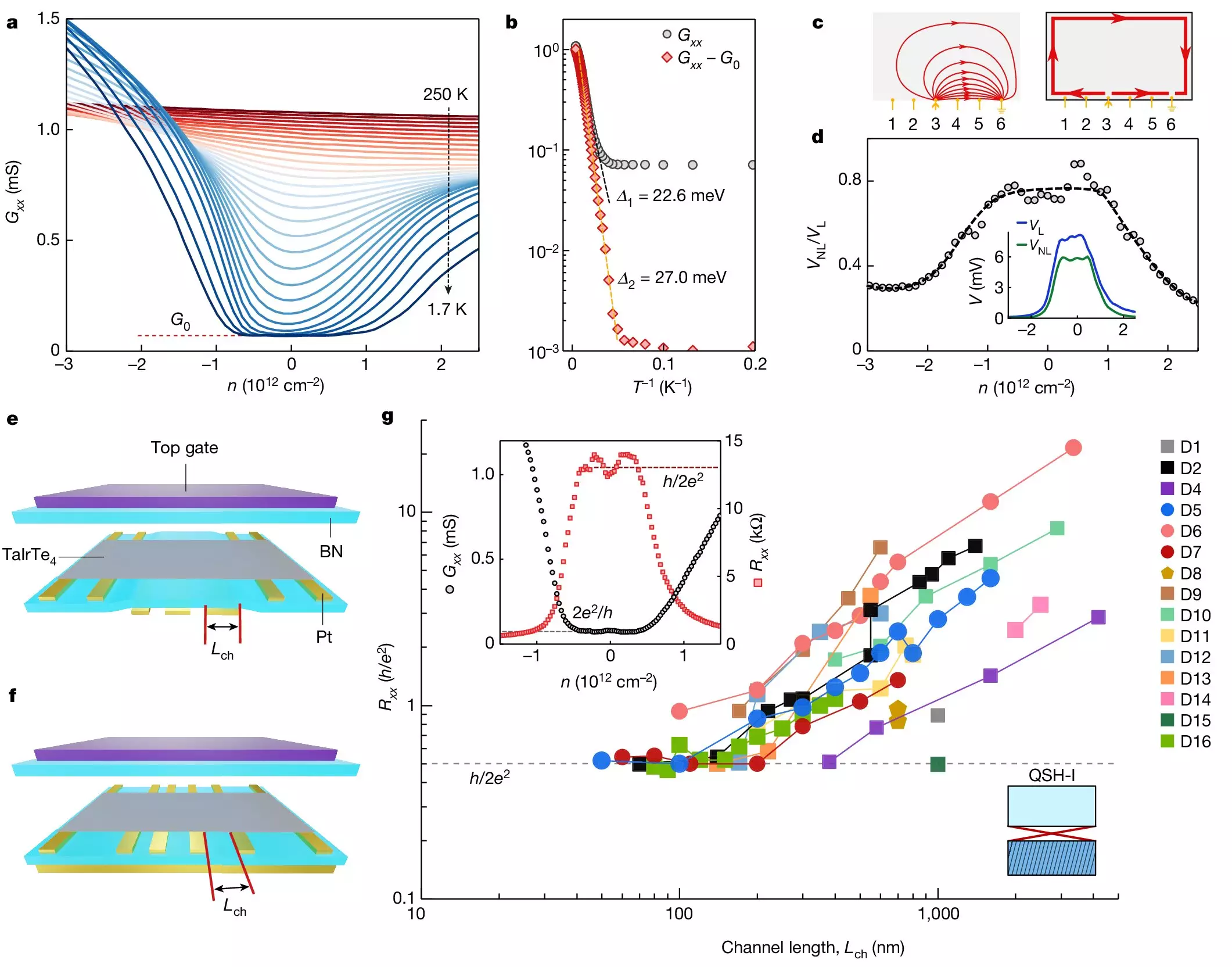A recent study led by Boston College physicists has uncovered dual topological phases in an intrinsic monolayer crystal, showcasing unconventional properties within a quantum material. This groundbreaking discovery introduces a new avenue for exploring exotic quantum phases and electromagnetism through the creation of topological flat minibands.
The team of scientists, hailing from prestigious institutions such as MIT, Harvard University, and the University of Tennessee, focused their investigation on exceptionally thin two-dimensional layers of TaIrTe4. These layers, which are less than 1 nanometer thick, were meticulously extracted from a larger crystal using a technique involving clear adhesive tape, demonstrating the importance of precision in experimental procedures.
The primary objective of the project was to verify theoretical predictions regarding the topological insulating properties of TaIrTe4. Through advanced nanofabrication techniques, the researchers were able to establish nano-sized electrical contacts on the material and observe its behavior under varying conditions. Surprisingly, the team discovered not one, but two distinct topological insulating states, defying initial theoretical expectations.
One of the most intriguing aspects of the study was the unexpected transition between the two topological states in TaIrTe4. While conventional wisdom dictates that adding electrons to a material should increase its conductivity, the researchers observed a point at which the material reverted to an insulating state, with electricity flowing exclusively along its boundaries without any energy loss. This abrupt shift to a second topological insulating phase puzzled the scientists, prompting further investigation into the underlying mechanisms.
Moving forward, the research team plans to collaborate with experts in nanoscale imaging probes to gain deeper insights into the unique behavior exhibited by TaIrTe4. Additionally, efforts will be focused on enhancing the material’s quality to optimize its dissipationless topological conduction and exploring the construction of heterostructures based on this new material to unlock even more intriguing physical phenomena.
The discovery of dual topological phases in a monolayer crystal represents a significant advancement in the field of quantum materials. By challenging existing theoretical frameworks and uncovering unexpected phenomena, the research opens up new possibilities for harnessing topological insulators for future electronic devices. The interdisciplinary collaboration between researchers from various institutions underscores the importance of collective expertise in pushing the boundaries of scientific knowledge.


Leave a Reply